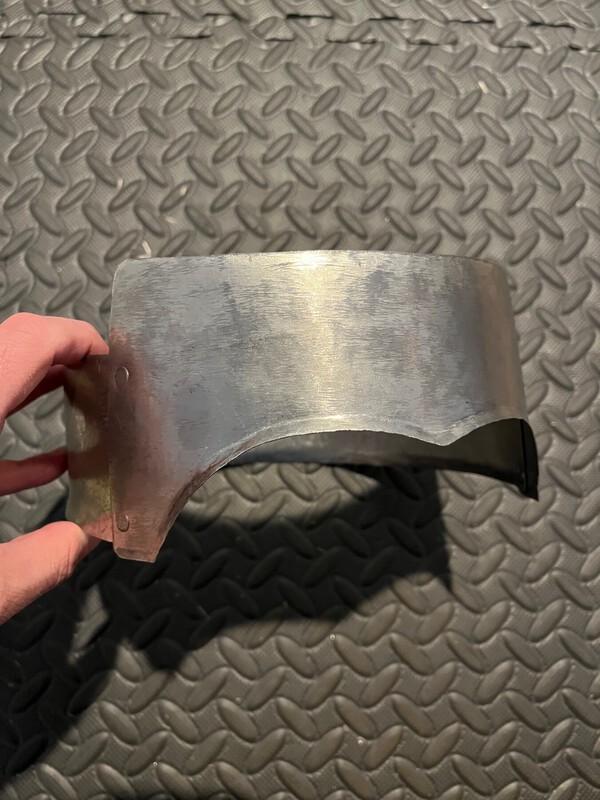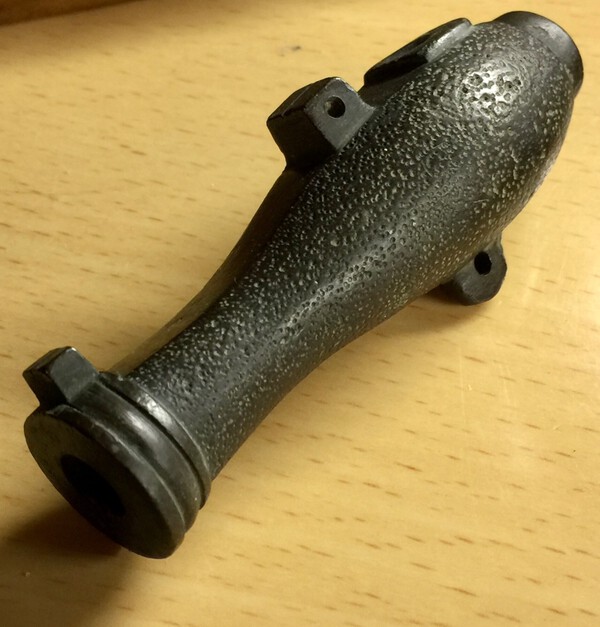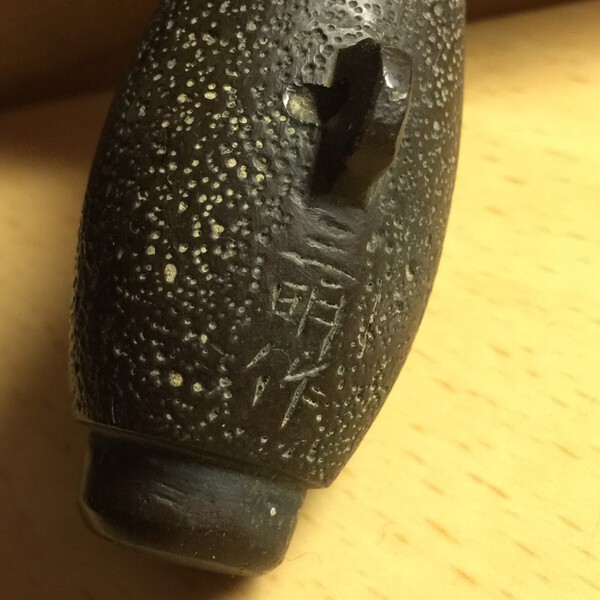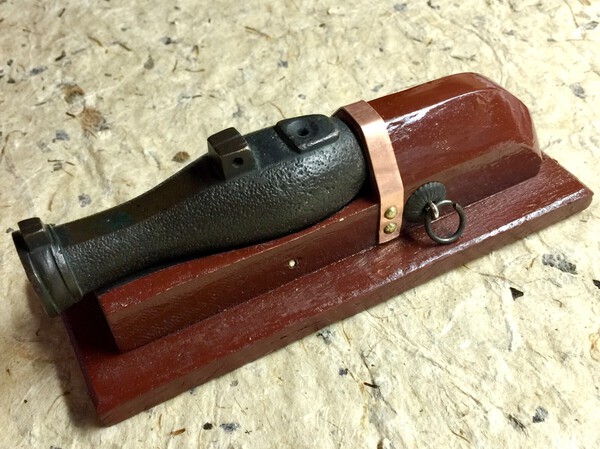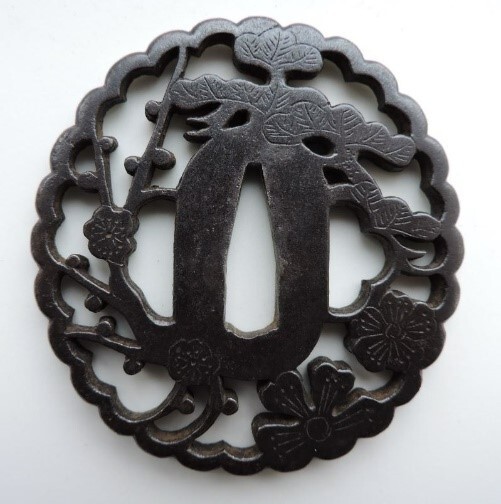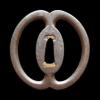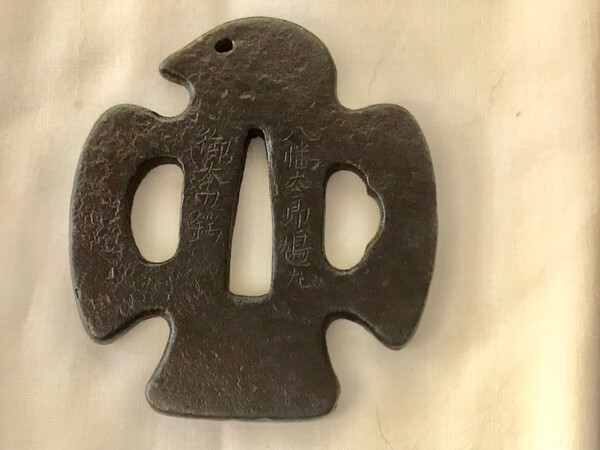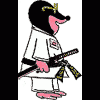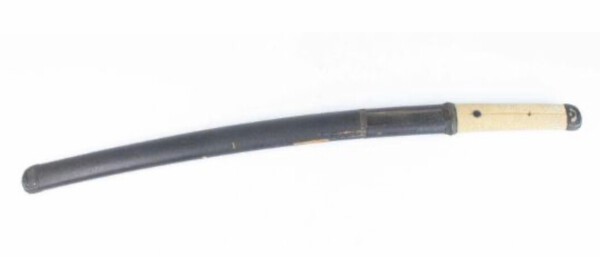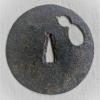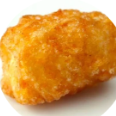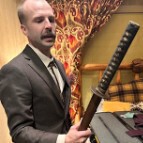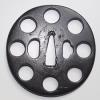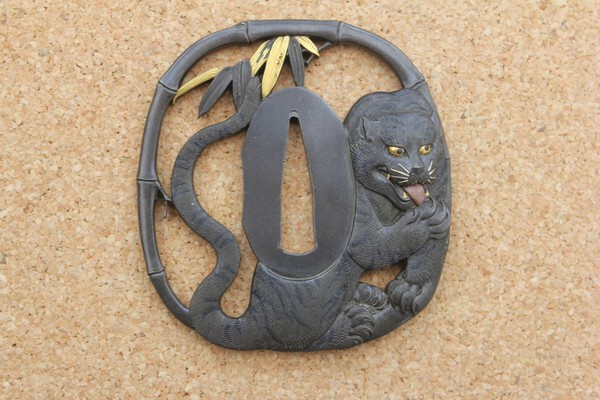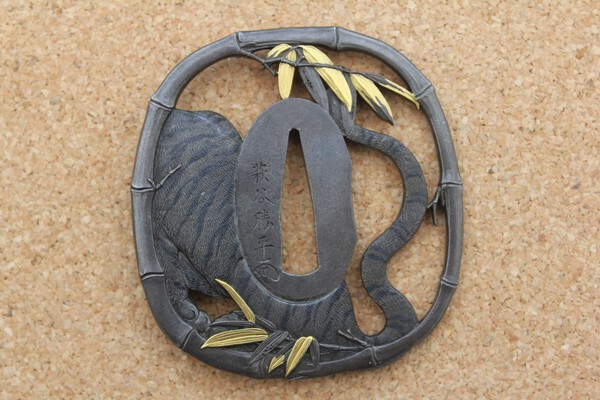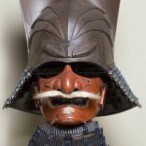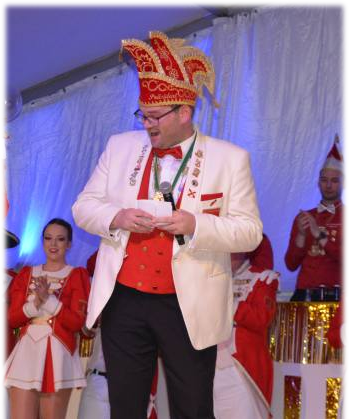Leaderboard
Popular Content
Showing content with the highest reputation on 06/14/2023 in all areas
-
So, I am NOT a kacchushi. I was challenged by Arthur a while ago to take up a hammer and try my hand at it though. I don't have a formal teacher; I'm winging it on this project. I'm not sure my wife would appreciate it if I quit my job to become a kacchu deshi... This is my try at a mogami haramaki dou. I am in the early stages of shaping the plates and making sure it fits. Please forgive the duct tape holding it together. It is a little catawampus on me because the tape watagami aren't exactly the same length, but it gives you an idea of how it fits. The design is modeled off of older armors which is why it doesn't come up as high in the front and back. I can move freely with it and use various weapons with ease. I cannot just copy an existing armor's dimensions because my proportions are very different from a mid-16th century Japanese man (I'm built more like a sumo wrestler). There is a lot of tailoring involved and I'm still not 100% happy with it, but I'm getting there. My next steps will be to make the hinges, kusazuri, and watagami. I will open the holes and then get to the urushi. I will be using real urushi, not car paint or cashew. I work more than 40 hours a week as a law enforcement officer and I have family obligations. I don't get a lot of time to work on this. I am expecting it to take a couple of years, to be realistic. It has been fun so far, and it has really given me a better appreciation of armor and how it is made. Things that I took for granted before, I can appreciate now. I am open to critique. Best regards, Chris5 points
-
Item No. 307 Tsuba in shibuichi with shakudo and gold 7.45 cm x 7.08 cm x 0.55 cm Subject of tiger and bamboo by Ford Hallam 2009. An utsushi or respectful copy based on a black and white image from an old Californian show catalogue. The lengthy period covering the research and making of this piece is the subject of the video to be seen on Ford's you tube channel , also linked above in the pinned threads. Subjects including how accurate the copy turned out to be against later acquired images of the original, the reasons behind doing this in the first place etc. will follow on in a few days.4 points
-
Somewhere under all that black paint [or is it powder coated?] might be hiding this? A little bigger 55 mm x 53 mm x 4 mm4 points
-
The squared off tagane marks most often exist in the Higo Hayashi and its subsequent Higo Kamiyoshi school. Depending on the maker you are talking about, some makers are more precise and consistent in their marks than others. Here is a Hayashi example of a Musashi style tsuba that I have owned for a long time.4 points
-
Hello gentlemen! Today I have visited a bargain corner. Got 2 tsuba for ...not much. 1. Umetada Tadatsugu with Mei and, I suppose a family kamon. Did some research, including this forum. Based on acquired knowledge, I am practically 100% positive. Needs a bit of cleaning of course, but nothing major 2. The second one is more interesting, in my opinion and I would be grateful if we can discuss it ( if there is something to discuss) Despite the condition, I really like the carving. ( Hotei with children) Mei says: Ishiyama Mototada Tried to research this artist, not much information, but pieces I have seen look very similar in terms of craftsmanship. I wonder what is the metal here? Thank you In advance! Regards Vitaly4 points
-
Just a show off your work thread. Projects you are working on, etc. One rule though: It has to be something you've made from scratch, from the ground up! No re-lacing, "restoration" work, modifying things already made, etc. I'd like to see some people in the community, regardless of their skill level or whether they're a professional or DIY-er, showing some of their work and what they're up to. Here's a humble helmet I'm prototyping right now.3 points
-
3 points
-
One more project I'm working on. I am making a very small hotoke dou and kozunari for my daughter (she's 7 now). She is growing faster than I can work, so I might have to start over when I have more dedicated time. This is the front of the dou, a few kusazuri and the mabizashi for the kabuto. I've made a little progress on the kabuto since this photo. When I get home I'll take a pic of where I'm at with it now. I'm making the kabuto a bit larger so she can grow into it. If my body type is challenging, a small child's is even worse. Her torso is shaped like a shoebox. I don't think my mabizashi is quite to the same level as Arthur's...3 points
-
Thanks John. Yeah... that taper doesn't work so well when you're built like a short yokozuna! I've loosely based it off of this armor, which was worn by Shimura Mitsuyasu. He had a similar build to me. A lot of guys who make armor will make exact copies of antique armors for museums and shrines. I have nothing but respect for them. Tailoring an armor to fit someone in the 21st century is a completely different animal. When Arthur was making the hachi on the okitenugui for me, he got tons of head measurements from me. My head is longer and larger than typical 16th century Japanese. Even if this dou doesn't amount to much the exercise of making it has been invaluable.3 points
-
well it is at least a genuine Ford Hallam design, created fro Paul Martin's dojo some years ago.3 points
-
3 points
-
I bought the first tsuba in the pics below a couple of years ago (JB125) and was described as a Higo tsuba, an attribution that I was happy with at the time (and still am) given my limited knowledge. The tsuba is a kikka gata (chrysanthemum shaped) iron sukashi tsuba with a flat migaki-ji (polished) surface with light engraving (kebori: hair carvings) to highlight the blossom and pine tree design. The iron has a black patina with a fine crystalline structure with few apparent inhomogeneous iron inclusions (tekottsu). The design consists of a mixture of cherry (split petals) and plum (rounded petals) blossom with the branch of a pine tree. The sukashi is cut vertically through the plate with no rounding to the edges. The mimi (rim) is defined by the 28-petal chrysanthemum design and there is a slight rounding to the edges. The tsuba has ryu-hitsu, the kogai hitsu being of regular shape and the kodzuka hitsu is bordered by a blossom branch. The nakago ana has no sekigane and shows some widening at the sides and filing at the bottom to fit a blade. The interesting feature is the groups of small, shallow rectangular tagane at the top (four) and bottom (seven) of the nakago ana, which were almost certainly maker’s marks in place of a signature, as the tsuba is mumei. I’ll get back to these later. Statistics: Height: 7.9 cm, Width: 7.4 cm, Thickness (rim): 0.45 cm, Weight: 116 g The design seems to be depict one (or both) of the following stories. The first is the Noh play, Hachi no Ki (the potted trees), in which Lord Tokiyori, disguised as a priest, begs shelter from a former retainer, Tsuneyo Genzayemon, who has fallen on hard times. Tsuneyo and his wife are only able to offer the priest boiled millet for food and, as it is cold and snowing, they chop up their three precious bonsai (plum, cherry and pine) and burn them to keep their guest warm. Six months later Hojo no Tokiyori (ruled at Kamakura 1246-1256) summoned Tsuneyo and granted him three fiefs (Plumfield in Kaga, Cherrywell in Etchu and Pine-branch in Kozuke). The 28-petal chrysanthemum probably alludes to Hojo no Tokiyori. A yukioe print of a scene from the play is by Harunobu is attached. The second theme that this tsuba may relate to is the bunraku and kabuki play ‘Sugawara and the Secrets of Calligraphy’. The main characters of the play are Umemaru (plum tree), Sakuramaru (Cherry Tree), and Matsuomaru (Pine tree). In order to save the son of Sugawara, Matsuomaru used his own son as a decoy who was killed. Anyway, back to the tagane. I started to keep an eye open for tsuba with similar tagane marks and some reliable authentication (e.g. NBTHK). Below are just a couple that I found together with part of an article published by Christian Malterre (sorry Christian, can’t remember where I got this from so that I can acknowledge your work) that attribute these ‘kakushi tagane’ to the two Higo masters: Kamiyoshi Fukanobu and Kamiyoshi Rajuku. There is also an additional tsuba showing these tagane that was for sale on Ebay, but attributed the tsuba to Akasaka. The two tsuba with NBTHK Hozon papers are attributed to ‘mumei kodai Higo (unsigned late Higo)’, which represents quite a wide range of possible makers. Higo (now Kumamoto prefecture in Kyushu, southern Japan) was the home to four major (and numerous lesser) tsuba schools, namely: Hayashi, Hirata, Nishigaki and Shimizu (the founder Jinbei Shimizu renamed the school Jingo, famous for brass inlay). Higo tsuba were highly regarded in the Edo period as illustrated by the old saying ‘For the best katana go to Bizen, for the best tsuba look to Higo’. (Information from Yatsuhiro Municipal Museum website). The pattern of light tagane punch marks is obviously a ‘signature’ rather than an adjustment to the size of the nakago. The NBTHK does not seem to be averse to attributing mumei tsuba to a particular tsubako, but the best that they do with these characteristic marks is ‘Late Higo’, which encompasses a lot of workshops as well as artisans. I have found other examples, but either the photos do not allow close examination of the tagane or the nakago has been modified. My questions are these: Can these particular kakushi tagane marks be attributed to a particular artist/school, or were they used by several (unknown) artists in different workshops over different periods of time? Also were these tsuba faked a lot? Pictures: 1. My tsuba: Omote 2. My tsuba: Ura with tagane 3. Harunobu print of Potted Trees 4. Example 1 5. NBTHK Hozon for Example 1 6. Example 2 7. NBTHK Hozon for Example 2 8. Christian Malterre picture 9. Christian Malterre text 10. ‘Akasaka’ Example Best Regards, John (just a guy making observations, asking questions, trying to learn)2 points
-
Hello All . . . I live in rural Eastern Ontario and there are plenty of Estate & Farm auctions during the good weather months. With the kids moving to the cities and aging parents, some of these rural properties are up for sale and all the substantial household, tools, farming equipment are being sold or auctioned off. I like to go a bit early to view what's up for sale. There was an area off to the side with plenty of hunting / fishing gear & accessories. Towards the back was a good sized box with numerous mailing tubes of various diameters. I opened a few to find topographic maps of Northern Ontario. I rummaged down to the bottom of the box and found a much heavier one. I opened one end and there was some newsprint stuffed in. Then I saw the distinct Type 98 Tsuka ! It was one of those rare moments when your heart races and time seem to slow . . . I looked around and was pretty sure nobody say. I tried to keep calm and keep cool . . . but my mind was in a flurry. I placed the tube back in the bottom of the box and covered it over with the other mailers. I wanted so badly to inspect it but had to wait several more hours till after the auction to finally take a good look at the sword and the rest of the lot . . . Not quite sure what it is yet . . . but . . . happy with this score. This just doesn't happen very often ! .2 points
-
Hahaha too kind as always Chris. And definitely will show step by step. That's actually what I want for this thread! I don't want someone coming in here and posting up something claiming it's theirs without being able to show how they did it from the ground up. First you start with a pattern. Rarely would I show this much of my patterns with notes to boot, but I went ahead and did it with this one. You can see more photos on my page of course. When I make a pattern they always require tweaking anyways. Next you start cutting stuff out. Sometimes you have to make some parts first and build patterns off them in the prototyping stage. That top plate for example, the pattern is cut ridicuously long right now. I'll cut it down to match the ring when it's formed. So once they're rough shaped, you start refining things. You cold harden the plates with thousands of tiny hammer blows on an anvil, trying not to warp the shape too too much as you do it. It's endless tedium and correction. Lots of people seem to just get the plates into rough shape without hammer hardening and leave it at that. Or you'll see plates forced together with rivets or welding, rather than being shaped together and held with minimum tension on the rivets. It's half art, half science. After this of course was the mabizashi. This thing took the better part of a week. The lines around the eyes are a tiny bit too exaggerated I think, and the overall shape and proportions could use some work, but, that is the purpose of a prototype afterall. I just went slow with it and gently. I have a few anvils and a bunch of random hammers. It's a matter of tinkering 'til I figure out how to get a shape. Lots of file cleanup. You can never own enough files... The inside should tell you a lot. One thing is these edges are more like a 45 degree angle than a 90 degree angle, but your brain thinks hard edge when you first look at it. You can see how the angle is somewhat shallow when you look from the inside. The main thing is to go slow and not over power things. It's a very physical job and requires you to be really aware of subtle things going on with your body, but people rarely realize this. It's more like a martial art than anything I think, as silly as that may sound to some. There are rhythms and techniques you pick up as you go. My tenouchi with the hammer is not that different from what I learned with swords back in the day. The best way to learn is to look at originals. I keep telling people, stop looking at decorations and surface level things. It's a trap that especially westerners fall into. Look at the base armor itself. Look at the geometry of the plates. I think every single collector should take up a hammer and try making something, even if the results are bad. It's too easy to think of these armors as random or arbitrary things thoughtlessly put together and just coming from the aether. Every single square inch of these has been worked over by hand and thoughtfully done. None of the designs are random. ALL of it is very, very intentional. Once you understand the thought process, it is easy to see how different groups are related to each other. You'll start seeing the same paper pattern used by two armorers in wildly different places that you never would have thought were connected to one another, but you can't come to any other conclusion as cold hard technical evidence is sitting there right in your lap. So I encourage everyone to give it a shot. Problem solve it, look at the original piece and try and do what they did. Never forget, it's armor. If it can't protect you, what's the point? Lots of fakes are not only non protective, but also poorly fit. This is something you can spot instantly once you've tried making something.2 points
-
Oh it does, trust me. We figured out a lot looking at original examples for Chris' project here. In essence you change the size by changing the degree of taper! A lot of people aren't fully aware of this. When he took the last batch of photos there the camera was a bit close, which distorts it. There is more taper there than it appears. It's also apparent when laid out flat. To make one of these in essence the muna-ita and waki-ita are going to be dictated by body measurements; the plates below are going to be adjusted in angle to fit the wearer. If you set an original flat, you can actually figure out the angle/degree used to adjust it for the wearer. Think of the dou in essence as the outside perimeter of a large circle, with all of the edges of the gomai structure pointing inwards towards a central point. The angle can be found then at this central point measuring off two of the lines.2 points
-
Arthur, A start to another great looking kabuto. Do you think you could show some step-by-step progress shots of this one, as you go? I love seeing the process, which is why I like seeing your work and your sensei's work. How did you get the lip on that mabizashi so tight? Just looking at that bottom edge gives me anxiety! Having tried my hand at making a few things I know how hard it is to get those tight curves and angles. That is masterful work. Good plan opening it up to the "hobbyists" since there are only two actual, trained kacchushi here; you and Andy (unless we have a few lurkers). I'll see if I can post a photo of two of my very unprofessional projects. Chris2 points
-
1.千秋万歳 Senshu Banzai! 2.*大和守兼廣... Yamato no Kami Kanehiro *Can't be sure if it corresponds with the reading on the saya there.2 points
-
Looking good, Arther. Thinking about it, everything I have done is restoration, addition or replacement of missing parts. I did make a complete base for a cannon barrel, but not sure if that counts! Hayago powder cartridges from bamboo. Oh, and a one-off project of a 'tachi' style holster for a matchlock long pistol, and a very special karuka ramrod, using ebony and ivory. Anyway, small stuff, nothing like all the projects that you have been attacking. And duh............................... I've just noticed that you posted this in Katchu, so ignore! The only piece of armour I ever made was a leather tissue purse for the front of a dou, ...and my wife made that anyway.2 points
-
2 points
-
2 points
-
A few months ago this tsuba sparked my imagination and I won it in auction after a little battle. The fine detail of the carving greatly appeals to me. I can stare at it and feel like I am there sitting in the teahouse, or floating on the lake in a little boat and playing a game of GO, or treading across the river trying to keep my balance as the water rushes around my legs, or trekking up the mountain past the waterfall, to the temple in the distance, or relaxing under the full canopy of a tree with my back up against its trunk, or following the path leading me to the dark entrance of a great cavern. I’ve been trying to discover what the theme of this tsuba is. At first I thought it was depicting Mount Penglai (Mount Horai in Japanese mythos), but after searching a while in NMB I came across this thread: “Fishing in Springtime Kofu Tsuba” (link is below) which led me to researching ‘Dewa Sanzan’ and ‘The Three Mountains of Dewa’. I believe this is probably what the tsuba is depicting but I would like to hear any other theories or confirmation. The biggest clue pointing to Dewa Sanza turned out to be the cave depicted on the ura side of the tusba. I found this reference when reading about Mount Gassan Shrine and believe it may be what the cave represents. (screenshot of history text below and link to website) Might it be the “cave of Yaotome no Ura” and “The landing place of Prince Hachiko, the founder of the three mountains of Dewa”? One of the details I am most impressed with (and charmed by) on this tsuba is the game of GO being played on the boat. The artist actually managed to carve a grid on the tiny board. I used to love to play GO. Someday I’ll find some more people to play with. One question (among many) that I have is, what is this armature sticking up from the mountain side? (circled in red) It kind of looks like a tori that is missing one of its legs. However, that doesn’t make any sense being that the carving is almost definitely deliberate. Can anyone shine a light on what it is? Another thing I’m wondering is if anyone has seen a painting or print with this scene. I’ve seen a number of tsuba depicting a similar setting and am curious if the artists are drawing from some other specific work. Thanks for reading. Mei: Choshu Hagi-ju Tomohisa Saku 8.4 x 7.9 x .0.4cm This is the link to the website. You can choose to translate to English and then go to ‘History’ to find the text I took a screenshot of. http://www.dewasanzan.jp/smarts/index/6/1 point
-
1 point
-
Hi there, I have a couple of modern-made tsuba that I would love to fit to one of my iaito or nihonto. They're not hugely valuable art piece - in fact their value is mostly sentimental but they are properly made. Because they're new, they've never been fitted to a nakago before. Now, my experience with nihonto stops at appreciation and mild collecting. I'm a budoka primarily, so while my interest leans towards the artistic, I'm mostly concerned with the practical. As a result, I've never taken a file to a tsuba before and before doing that I thought it might be prudent to ask some advice. So, what should a clumsy amateur know before attempting to fit their first tsuba to a sword?1 point
-
Hi Jon, My humble opinion. £250 = pennies You can't go wrong IMHO. The Kozuka maybe worth that. Looks nice as an overall piece. Saya repair and Tsuka Ito easily done at home. Cannot comment on Blade condition, but looks GENUINE.1 point
-
1 point
-
1 point
-
That actually looks pretty good, Chris! Except that it doesn't seem to have that really tapered look that early mogami do have.1 point
-
I don't think these leather "TSUBA" would pass as Nerikawa - not unless you have had too much to drink! Leather coasters. https://www.ebay.com.au/itm/166165788874 Cheers!1 point
-
Thanks! I'm not sure when casting started, or why "some" collectors believe casting is inferior to forging. Especially, for the facts we're discussing a hand guard. What is a fact, their are good casting and poor castings of late and of far. The one presented is obviously of poor quality, and that's about as specific as one with collectors knowledge can "assume". After looking at what's good, one can make an educated assumption on what's not.1 point
-
It is used loosely. If you read through the available litterature, you will find this stated as a general opinion of the researchers.1 point
-
1 point
-
Nengo says 4th year Genkō, third month. That means 1334. Very suspicious….1 point
-
I'd like to see all of those! Those are some eccentric projects, that's right up my alley!1 point
-
意味は人間が本来もっている心そのままが仏であることという禅語です This explanation comes from a discussion about a fan with 4 characters on it, here https://www.bokushinan.com/post/_緑水青山 It says: “This is a Zen saying that the human heart in its original natural state is the Buddha.”1 point
-
1 point
-
王政三 See 王政復古 O-sei Fukko Third year after the restoration of the Emperor system, i.e. 1867 + 3. Before the name Meiji had been invented. PS, join the club. I learnt something today!1 point
-
Depending on the lacquer that was used for the SAYA, high-viscosity super glue could work. It looks as if the SEMEGANE was fixed with glue which is not the traditional way I think, but you will probably not know what kind of glue had been used. If it were mine, I would fix it permanently with 'two component adhesive' (Araldite adhesive). Another possibility would be a tiny piece of (folded?) paper jammed under the SEMEGANE.1 point
-
Jon, what can you see in this blade that you want to study? Does it have a complete HAMON running through to the KISSAKI? Is it a WAKIZASHI or a NAGINATA NAOSHI? Is the a HADA visible? I like the SUGATA, but without even showing the NAKAGO, what advice could I giver? It all comes down to the purchasing price and to your willingness to risk a certain amounnt of money. Most people have a personal limit for losses.1 point
-
1 point
-
1 point
-
Hi JT, Thank you! - reservations understood; I am also a very amateur member Thank you for the time, effort, and care you put into this response. I appreciate it a ton, and this is exactly the kind of information and discussion that helps my notes and propels my studies Soe-Bi / Koshi-Bi with Soe-Bi. Thank you for that identification, thats perfect for my notes, and now I can refer to these features properly. And thanks for confirming that you also see Itame Hada; I was worried my eyes were misidentifying that Very exciting that you believe it to be late Muromachi. After these discussions, and further study, I also believe it to be o-suriage. I believe I can see the hamon run into the nakago. And thanks for the kind words about my sword, I just wish that Kissaki were in better shape Im glad it appears to be OLD / pre-shinto. I plan to learn everything I can from this sword. As a novice, it's been an invaluable study tool, and has taught me a lot already. I hope to learn even more from it! As far as a polish goes. I would LOVE to have it polished / assessed by a togishi. That will likely be my next step with this particular blade. I've never sent a sword in for polish, so that alone would be a learning opportunity for me BOOKS! I love books. I've been pouring over "The Connoissur's Book Of Japanese Swords", "Markus Seskos encyclopedia" , and "Kanzan Satos The Japanese Sword" for a couple years now. They have been awesome resources. Although, I'm now starting to see the biggest progress in my studies from seeing swords in-person and discussions. Next on my reading list / shopping cart are the Kentai 1 & 2 supplements from Markus Sesko Thanks for chatting this sword with me! I appreciate it a lot, and you've given me some great information to look into Cheers, -Sam1 point
-
Look at these phantastic Higo Tsuba https://artsandcultu...story/QAXxDIAlN6VZLg Here you see special Tagane together with wormanship1 point
-
Hello John, you wrote: The NBTHK does not seem to be averse to attributing mumei tsuba to a particular tsubako, but the best that they do with these characteristic marks is ‘Late Higo’ I own Kamiyoshi Mumei Tsuba. The NBTHK judge the one to Rakuju the other to Fukanobu. We have to look at the workmanship together with the Tagane. All your shown Tsuba missing a good workmanship and a nice Tagane punch that you will find on Tsuba from the two Kamiyoshi master. This will be the main reason for a Hozon with Kodai or only Higo attribution.1 point
-
Hi John, These punch marks are explained at length in Ito Mitsuru's books about Higo tsuba. And yes they can serve to identify specific tsuba-ko. I don't have my books here with me at work, but here's a Rakuju of mine - 2 at the top, 3 at the bottom. But it's not just the count of punch marks, also the angle, size, placement .... Remember, they're being applied as a sort of signature, so they should be scrutinized as such. The ones in your examples are usually attributed to Ko-dai work, so later work - they usually lack confidence, are shallow, sometimes not even connected to the nakago-ana,...1 point
-
Item No. 306 Tsuba in shibuichi with shakudo, gold and copper 7.02 cm x 6.65 cm x 0.38 cm Subject of a tiger with bamboo signed Hagiya Katsuhira, late Edo/Meiji. Superb workmanship, obviously made to order for a wealthy client ; the subtle treatment of the tiger's stripes and fur yet again are far better appreciated when held in hand. Possibly familiar to some, this is a tsuba I bought from the late, lamented Darcy Brockbank some seventeen years ago. It was bought as a ' stand alone ' piece although it was subsequently found to be one of a pair that had been split up. If any one has a copy of the catalogue for the California exhibition held in the early to mid sixties, the pair are illustrated in black and white. It would be good to have a copy scanned through for reference if possible. The story of the making of a replica of this tsuba's companion will be expanded upon when the next item is posted to this thread. There is, however, an error in the piece in spite of all the efforts made to depict a realistic tiger... can anyone spot it ? ( not easy ).1 point
-
Hi folks, We've been back in our house for 2 weeks; still living among boxes and piles of stuff but it is good to be home. I moved my sword books out of storage the other day; I'm ready for business. For a week or so I'll give a 10% discount on any item on my website: books, fittings, or swords. Save $10 on a $100 book or quite a bit on the Tsuda Sukehiro katana. If you are interested in anything please contact me by email through my site or gdoffin at gmail.com, not personal message here at NMB. I need your emails to keep track of business. And a big thanks to all of you who wrote kind messages after the fire. Grey1 point
-
Uwe wasn't laugh at translation just that someone would think a mei that newly cut could pass as something from 700 years old. . Gdawg Is this a ebay pickup?....and did seller have monkey in his name?0 points
-
0 points
-
What a mess ok I came in in middle somewhere. Maybe Brian will move them all into one post.0 points
-
0 points
This leaderboard is set to Johannesburg/GMT+02:00


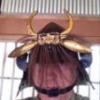


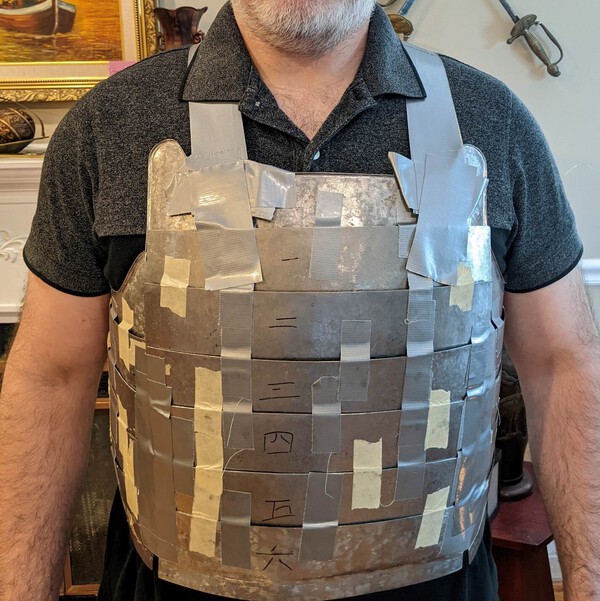
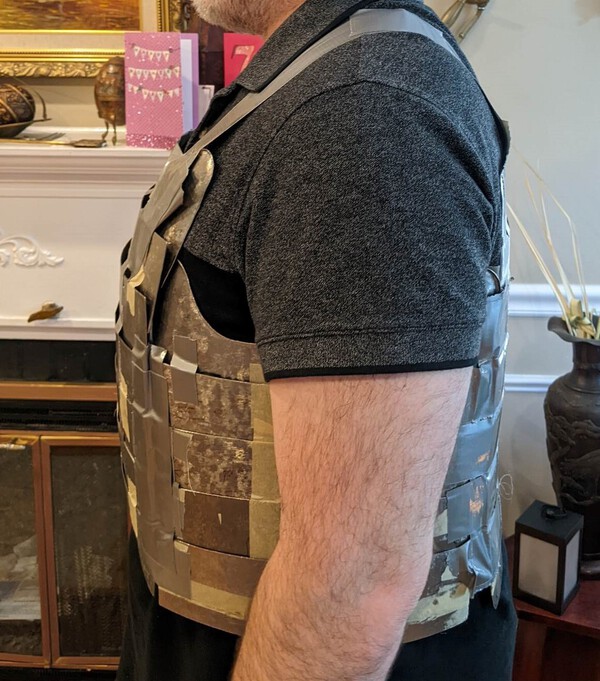
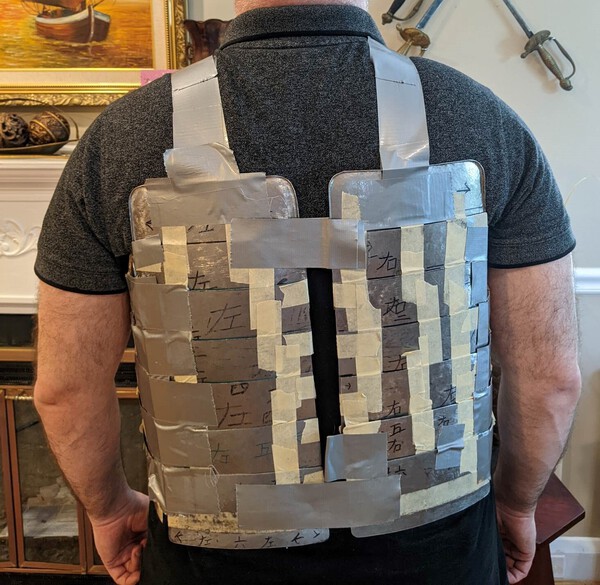

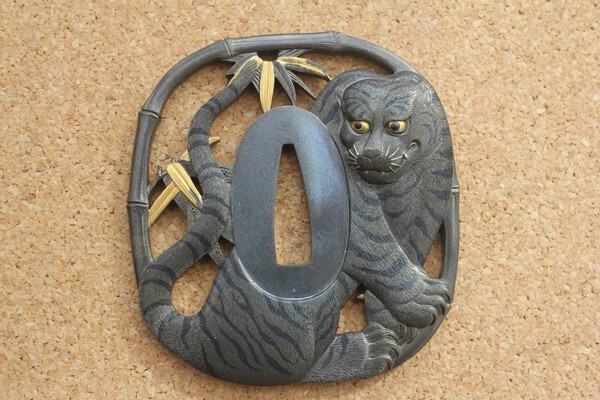
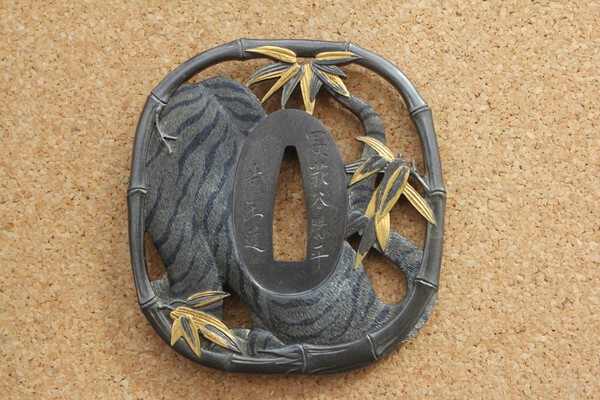

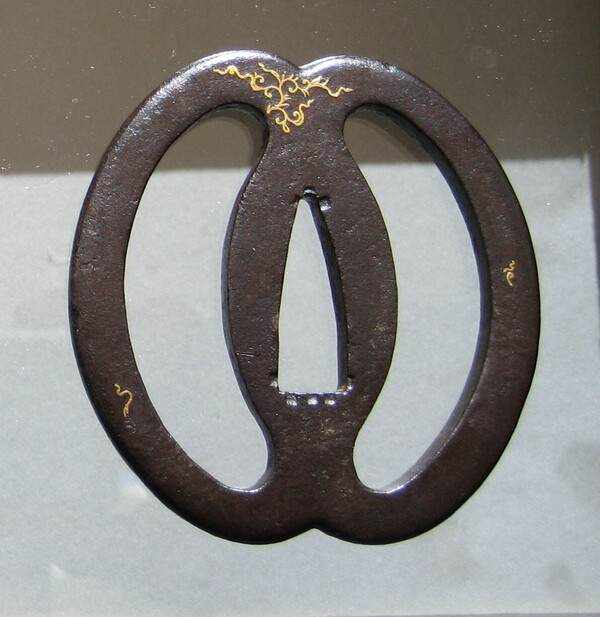
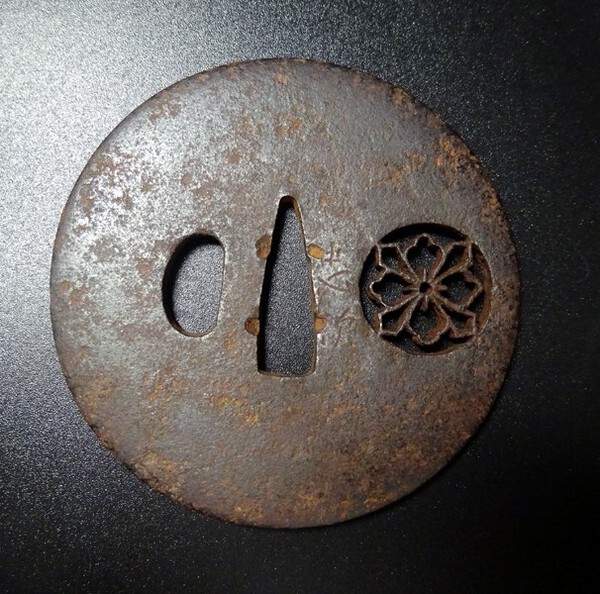

.thumb.jpeg.e881f73bfd8037d56fbf3152c8620b23.jpeg)
.thumb.jpeg.89067c6b0c49c189c1a40c06bf5175b1.jpeg)
.thumb.jpeg.f0f760e009531f087bbe4d2a7f8d9340.jpeg)
.thumb.jpeg.439835336d0f4b7fb46387942e40ba94.jpeg)
.thumb.jpeg.58960b6bca3edcdb7478b37496b522b9.jpeg)
